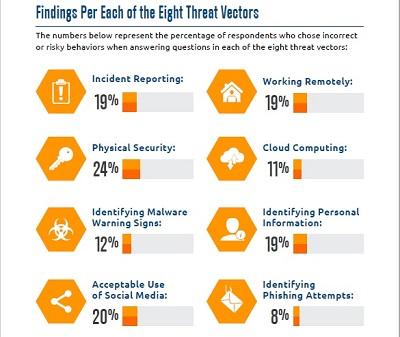You can see how Xyla Foxlin exudes troll-attracting pheromones.
She’s young, she’s an entrepreneur in the field of robotics, she’s founded a startup (one that enables you to virtually hug a child anywhere in the world via a stuffed animal; imagine how good that will feel to military kids), she’s scored an increasing number of speaking gigs, she’s won awards in robotics, she’s featured in a Microsoft ad…
…and, of course, she’s a she. Plus, she’s a she who doesn’t shun feminine dress and who has no problem with the Disney princess aesthetic and dramatic makeup.
As she tells it in a Medium article, Foxlin grew up with sexual harassment. It came from members of the almost all-boy high school robotics team (of which she was the captain) who broke into her bedroom, stripped, dressed up in her bras and underwear, photographed themselves in sexual positions, set up her stuffed animals to hump each other, and paid a freshman to videotape her reaction when they sent her the images.
It came when she worked at a local airport, exchanging washing, waxing, fueling and maintaining airplanes in exchange for the flight time she couldn’t afford. What she was told by one pilot when she drove up with the fuel truck: “No f*cking way is some chick fueling my plane.”
And then, of course, there’s the river of bile and spiteful froth known as Twitter – or at least some of the darker corners of it. It’s there, explains Foxlin, that, shortly after starting her Kickstarter campaign this summer, she began to receive typical sexist troll spewings. But there was one account – @anhdochan – that was particularly violent and hateful.
You can see the screen captures that Foxlin saved on her Medium post. They included:
- The hope that she gets punched in the face one day so she’ll know what it’s like to not be able to rely on her pretty face.
- Calling Foxlin a “photoshopped self u bimbo”.
- An accusation that Foxlin is “promoting beauty and brains while girls who don’t have urur plastic, anorexic look are left behind”.
- A suggestion that Foxlin “do all of us a favor and choke on the next expensive meal you eat, or get raped which ever exec you need to sleep with for $$$”.
Then too, because, as Foxlin says, “a picture’s worth a thousand words,” there was the photo of Foxlin with drawn-in devil’s horns, nipples, and arrows pointing at her breasts, captioned “SUPERCILLUOUS SLUT.”
But it was the threats of violence that forced Foxlin to try to put a stop to the hateful campaign.
Foxlin told Business Insider that at first, she did what Twitter suggests with regards to online abuse: she reported the tweets to Twitter via the company’s automated harassment reporting tool.
Nothing happened.
That, unfortunately, is a story told by far too many people who’ve been abused on Twitter.
You might recall that in February, Twitter had announced that it was giving people more ways to report targeted harassment, including taking steps to identify the whack-a-moles who get suspended only to go off and open new accounts.
In July, Ed Ho, general manager of Twitter’s consumer product and engineering department, said that thanks to these changes, Twitter’s new systems had removed twice the number of repeat offender accounts – the whack-a-moles – over the preceding four months.
And yet. So many “and yet’s.”
Last month, it emerged that a bug in Twitter meant that all a blocked account had to do to keep abusing somebody was to create an additional, dummy account, toggle over to it to view the messages of whoever blocked them, compose a reply, toggle back to their main account, and then hit reply to engage with that person’s tweets anew.
Of course, besides that bug, simply blocking somebody doesn’t stop them from making violent threats. It doesn’t keep a victim safe if they’re oblivious to those threats. Foxlin is a case in point: she said she needed to know what the abusive account was saying, for her own safety. The troll had moved from insults to rape threats, then to eventually doxing her. The troll tweeted out her address in response to Twitter users looking for sex, telling them Foxlin was in the sex industry.
The harassing account appears to have been set up expressly to torment Foxlin, given that it was devoid of any other content. Her friends also reported the account, after which the account became private: in other words, you’d have to follow the account to see its posts.
Twitter cleared it as OK, after which the @anhdochan account went right back to being public.
As far as Twitter blocking repeat offender accounts goes, one commenter on our coverage of that announcement said they couldn’t see any improvement:
They recently suspended my account 2 days after I reported another user who was breaking their TOS by using 2 accounts to gang up and harass people (and used both accounts to mass DM me 70+ times in an hour).
Twitter’s internal numbers painted a far rosier picture than many of its users reported. That point was strongly underscored by a report from BuzzFeed, also posted in July, about how Twitter is still slow to respond to incidents of abuse unless they go viral or involve reporters or celebrities.
Basically, when it comes to getting Twitter to pay attention to its own rules against abuse, it pays to know somebody. Otherwise, far too often, troll targets are left staring at streams of sewage in their Twitter feeds.
No surprise here: Foxlin says she got rid of her troll by contacting a friend who’s an engineer at Twitter. Yup: she knew somebody. That, plus a subpoena helped to identify the abuser, who turned out to be a fellow robotics student that Foxlin had helped to mentor. Her abuser was a woman.
When confronted with evidence, the woman confessed and wrote a lengthy apology to Foxlin, who hasn’t yet decided if she’s going to press charges.
Thankfully, many more women in tech believe in sticking together. Foxlin was aided by one such: a contact at Twitter whom she met through a supportive network for women in technology, the National Center for Women in Information Technology (NCWIT) – a group she urged others to support.
It’s wonderful that Foxlin had help at Twitter. But that’s no help at all for those of us who don’t personally know somebody who works at the historically troll-saturated platform.
It took Foxlin two months, she says, to track down the troll and get her account suspended. What she thinks of Twitter support:
Twitter support was a bot.
In other words, it was a grueling process of getting a real, live person to actually review the harassment and to take action.
Twitter, we know you’re trying. You tell us that all the time. You’re always coming out with new ways to deal with trolls, and you’re proud to show off numbers that show it’s working.
But what happened to Xyla Foxlin shouldn’t happen to anyone.
Do more. Do better. Drop the bot response. Do human. Whatever it takes, do human.
Article source: http://feedproxy.google.com/~r/nakedsecurity/~3/yPSpwS-uRjc/




